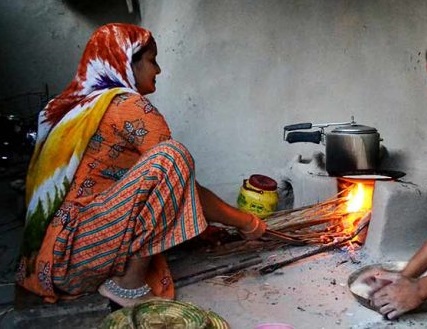
BY SUDHIR KUMAR
The average monthly income of rural households saw a substantial rise of 57.6% over a five-year period, increasing from Rs 8,059 in 2016-17 to Rs 12,698 in 2021-22, a recent NABARD survey said.
This indicates a nominal compound annual growth rate (CAGR) of 9.5%.
According to NABARD’s latest All India Rural Financial Inclusion Survey (NAFIS), the annual average nominal GDP growth during the same period was 9%.
When considering all households together, the average monthly income stood at Rs 12,698, with agricultural households earning slightly more at Rs 13,661, compared to Rs 11,438 for non-agricultural households.
Salaried employment in the government or private sector was the largest income source for all households, accounting for approximately 37% of their total income.
For agricultural households, cultivation was the main income source, accounting for about one-third of their monthly earnings, followed by government or private services contributing one-fourth share, wage labour (16%), and other enterprises (15%), the report highlighted.
Among non-agricultural households, government/private service contributed 57% of the total household income, followed by wage labour, which accounted for roughly 26% of the total income.
Furthermore, the average monthly expenditure of rural households rose significantly from Rs 6,646 in 2016-17 to Rs 11,262 in 2021-22.
The agricultural households reported a relatively higher consumption expenditure of Rs 11,710 than Rs 10,675 for non-agricultural households.
The annual average financial savings of households increased to Rs 13,209 in 2021-22 from Rs 9,104 in 2016-17. Overall, 66% of households reported saving money in 2021-22, compared to 50.6% in 2016-17.
The report also highlighted that the Kisan Credit Card (KCC) has emerged as a key tool for promoting financial inclusion in the rural agricultural sector, showing substantial growth in coverage over the past five years.
In total, 44% of agricultural households were found to possess a valid Kisan Credit Card (KCC).
The percentage of households with at least one member covered by any form of insurance increased significantly from 25.5% in 2016-17 to 80.3% in 2021-22.
The percentage of households with at least one member receiving any form of pension increased from 18.9% in 2016-17 to 23.5% in 2021-22.
Also, the percentage of respondents demonstrating good financial literacy increased by 17 percentage points, rising from 33.9% in 2016-17 to 51.3% in 2021-22.
Key Highlights of NAFIS 2021-22
- The average monthly income of households increased by 57.6% during the five-year period from Rs 8,059 in 2016-17 to Rs 12,698 in 2021-22, suggesting a nominal compound annual growth rate (CAGR) of 9.5 % (Table 1). Annual average nominal GDP growth during the same period (on financial year basis) was 9%.
- Average monthly expenditure of households increased during the five-year period from Rs 6,646 in 2016-17 to Rs 11,262 in 2021-22.
- The share of food in the consumption basket of households declined from 51% in 2016-17 to 47% in 2021-22.
- Annual average financial savings made by households increased to Rs 13,209 in 2021-22 from Rs 9,104 in 2016-17. 66.0% of households reported to have saved in 2021-22, as against 50.6% in 2016-17.
- The proportion of households who reported to have outstanding debt moved up from 47.4% in 2016-17 to 52.0 % in 2021-22.
- The proportion of agricultural households that took loans from institutional sources only increased from 60.5% in 2016-17 to 75.5% in 2021-22 (the corresponding increase for non-agri households was from 56.7% in 2016-17 to 72.7% in 2021-22). The proportion of Agri-households that took any loan from non-institutional sources only decreased from 30.3% in 2016-17 to 23.4% in 2021- 22.
https://www.nabard.org/auth/writereaddata/tender/pub_0910240202031157.pdf
